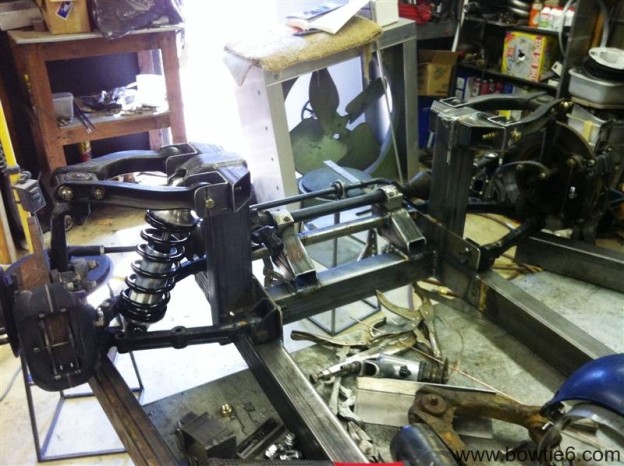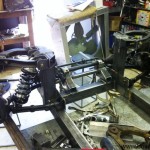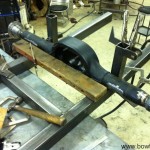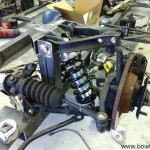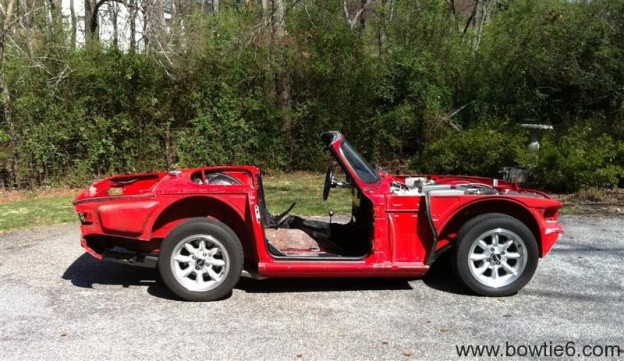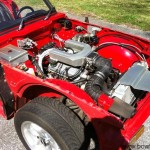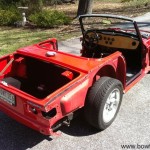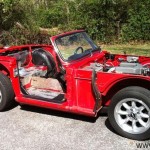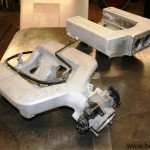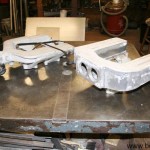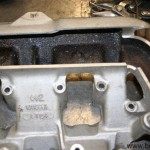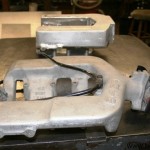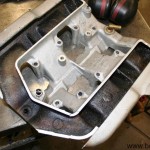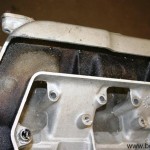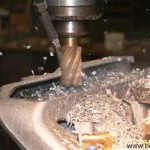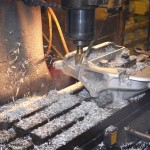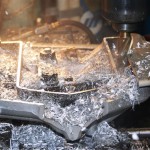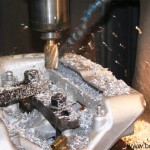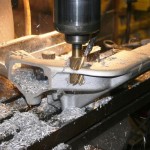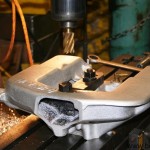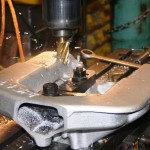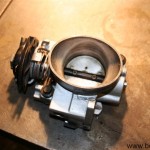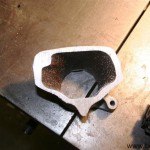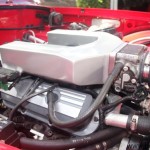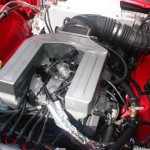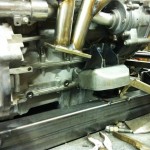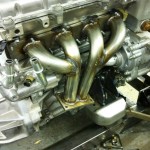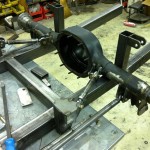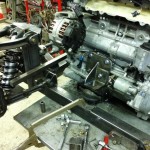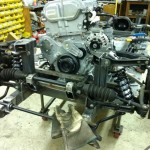Whew! This has been a long week.
Worked on bowtie6 a little today. The rear suspension came apart and took the transmission tunnel apart also. Let me talk about the tunnel: when the V6 was grafted into the TR6, we made an all aluminium transmission tunnel cover. It is secured on a special square tubing edging that was welded to the floorboards. My main concern with the Ecotec was that the transmission tunnel cover would be too small. Well, by taking the tunnel off today we were able to determine there will be enough room. We had to make room to run the exhaust pipes on the V6 and since the Ecotec dumps on the passenger’s side, we will have enough clearance.
Then today’s good news: My cousin Jim has made some extraordinary progress on the front suspension. Here is a small gallery showing the new front section of the new made-from-scratch frame. You can see the new front suspension towers and the new coilovers that are so trick! With these guys in place, ride height will be adjustable and best of all: no more spring compressors in order to take things apart.
If you look close enough, you can see the steering rack mounts Yes, those are aftermarket rack mounts and they work quite nice. Needless to say, the rack has been positioned in a very special location in order to prevent bump steer. The rack is stock TR6 – they are nice enough. The front suspension also shows factory rotors, however the calipers are uprated Wilwoods with four pucks each. They have proven to provide very good stopping power.
Take a look:

